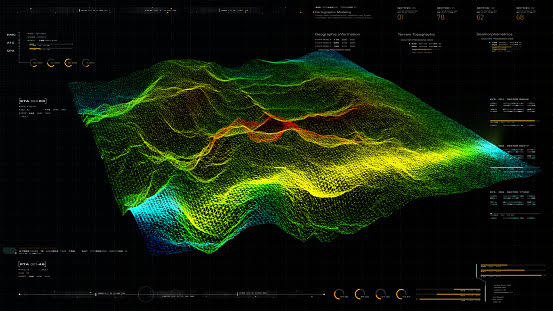Geospatial Information Systems (GIS) have transformed the way we understand and navigate our world, going beyond mere mapping to uncover intricate connections and patterns. This technological evolution plays a crucial role in emergency response, offering timely coordination of assets and life-saving resources. In a realm where every second counts, GIS's efficiency is invaluable.
Understanding GIS (Geographic Information Systems)
Geospatial Information Systems, or GIS, are complex platforms that combine geographic data with analytical functions. To truly appreciate GIS, it's important to understand some key concepts:
- Geospatial Data: This refers to information related to physical locations, coordinates, and features on the Earth's surface.
- Layers: GIS maps are built in layers, with each layer representing a different type of data, such as roads, buildings, or weather patterns.
- Spatial Analysis: This is the process of examining spatial relationships, patterns, and trends through GIS.
- Mapping: The visual representation of geospatial data, allowing users to see and interpret information in a graphical form.
The evolution of GIS from simple mapping tools to multifunctional platforms has opened new horizons in various fields, including emergency response. It enables users to visualise, question, analyse, and interpret information, offering insights into geographical relationships, patterns, and trends.
In the context of emergency response, GIS's capabilities extend beyond mere location tracking. Whether it's locating a distressed vessel at sea, dispatching medical aid to a remote accident site, or planning evacuation routes during a natural disaster, GIS technology helps emergency responders make timely and informed decisions. By providing a unified view of critical data and allowing for the seamless integration of various information sources, GIS ensures that resources are mobilised effectively, underscoring its vital role in safeguarding lives and property.
History and Evolution of Dispatching in GIS
The history of dispatching using GIS can be traced back to significant milestones that shaped the modern emergency response landscape. In the 1960s, the earliest forms of GIS laid the foundation for spatial analysis and mapping. By the 1970s, computer technology began to be integrated into dispatching, with systems like Computer-Aided Dispatch (CAD) offering a more coordinated approach. The introduction of GPS in the 1980s allowed for real-time tracking and dynamic management of resources. With the advent of the Internet in the 1990s, enhanced data sharing enabled multi-agency collaboration and more effective decision-making. From the 2000s onwards, continuous advancements in GIS technology, including predictive analytics and machine learning, have transformed dispatching from manual methods and cumbersome maps to a highly efficient and intelligent process.
GIS technology has fundamentally enhanced dispatching in various ways. By providing real-time tracking of emergency vehicles, personnel, and other resources, it has dramatically reduced response times. Furthermore, GIS has allowed for the aggregation of data from diverse sources such as weather forecasts, traffic conditions, and local demographics to create a comprehensive situational awareness. This integrative approach has also enabled optimised routing based on real-time conditions, ensuring quicker arrivals at emergency sites. Perhaps one of the most transformative aspects has been the facilitation of coordination between different emergency services, leading to more coherent and effective responses. Together, these advancements represent a substantial leap in the efficiency and effectiveness of emergency dispatching.
Ethical Considerations in Geospatial Data
Geospatial data is vital in emergency response, but it also presents ethical considerations such as data privacy, regulatory compliance, and the potential for biases in representation. The challenges include balancing accessibility with the risk of information misuse, questions of data ownership and control, and the potential for biases in how territories and communities are mapped. In some instances, geospatial data may unintentionally favour or disfavour certain areas or groups, leading to complex issues over representation and fairness. This can manifest in various ways, such as unequal attention to rural versus urban areas, or the improper handling of sensitive or disputed territories. These ethical nuances underscore the importance of careful, responsible management of geospatial data.
This unintentional bias in GIS data towards urban areas can have significant real-world consequences, particularly for remote groups of people. In the context of EMS response and disaster relief, this bias can lead to a lack of preparedness and understanding of the unique challenges and vulnerabilities faced by rural and remote communities. Whether it's responding to bushfires in Australia, hurricanes in North America, or floods in Europe, an incomplete or skewed GIS dataset can delay response times, misdirect resources, and even hinder the development of appropriate prevention strategies. For example, if rural areas are underrepresented in GIS data, emergency services may lack vital information about access routes, local infrastructure, population distribution, and geographical risks, leading to inefficient or ineffective responses. This not only endangers lives but may also exacerbate economic and social disparities between urban and rural areas.
Conclusion
The evolution and application of GIS in emergency response are undoubtedly transformative, driving efficiency, coordination, and effectiveness in life-saving operations across the globe. However, as we have explored, the journey is not without its challenges and complexities.
Among these challenges is the critical issue of equal access to consistent GIS data. Whether between international entities or within a single country, gaining access to a unified and consistent source of information can be a significant hurdle. Varying data standards, permissions, and interests may create barriers, limiting the effectiveness of GIS in situations where coordinated and timely response is essential.
This highlights the underlying need for collaboration, standardisation, and ethical stewardship in the management of geospatial data. Efforts to bridge these gaps, adhere to ethical considerations, and foster a single source of truth are not just theoretical ideals; they are practical necessities to fully unleash the potential of GIS in emergency response.
